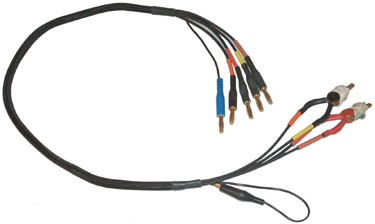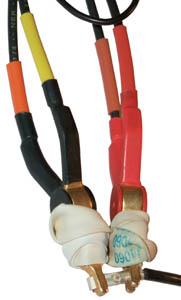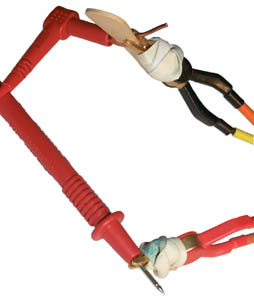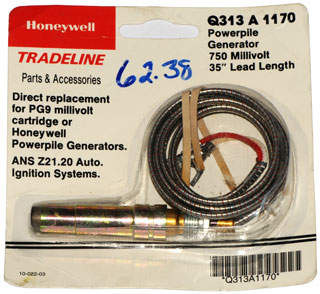

Here a 30 Amp Power Pole Contact (silver plated copper) is being used as the zero reference. Immediately after making the connection the resistance was 4.5 milli ohms and after an hour was 1.8 milli Ohms. Although after an hour the variability in the reading is less, it's still a little over 1 milli Ohm.
These leads when combined with the 34401 seem good for may 0.01 Ohms, but not 0.001 Ohms.
The specification is 0.010% of reading + 0.004 Ohms.
The ability of this system to measure very near zero is at the spec limit. But when larger values are measured it does fine.
There's no need to use NULL for removing the zero since it's in the spec noise.
I checked a pocket Amp meter for which the calculated coil resistance was 2.65 milli Ohms and it measured 2.8 milli Ohms, close enough.

As a sanity check the resistance of a Greenlee test lead from my Fluke 87 DMM was measured. The problem was the safety shrouded Banana plug. By sticking a couple of short bare copper 14 AWG wires into the gap between the metal center plug and the metal shell liner and they using a pop-sickle stick to keep the wires from shorting to each other a Kelvin connection was made.
The reading is 0.040.5 Ohms (that's 40 milli Ohms) and has been stable for some time. It did decrease a few milli Ohms from when first connected but after a few minutes stabilized.
 Many
Digital Multimeters, like the Hp/Agilent 34401, have a 4 wire
connection for resistance in addition to the two wire
connection. There is a special set of leads for use with the
Kelvin connection. The 34401 reads out to 0.000,1 Ohms.
The 4 wire, Kelvin, connection is very simple. One of the
pairs has a current source and the other pair is a voltmeter.
Suppose that all 4 wires had 10 Ohms of resistance and you want to
measure a 1 Ohm resistor using a 1 ma current source.
Many
Digital Multimeters, like the Hp/Agilent 34401, have a 4 wire
connection for resistance in addition to the two wire
connection. There is a special set of leads for use with the
Kelvin connection. The 34401 reads out to 0.000,1 Ohms.
The 4 wire, Kelvin, connection is very simple. One of the
pairs has a current source and the other pair is a voltmeter.
Suppose that all 4 wires had 10 Ohms of resistance and you want to
measure a 1 Ohm resistor using a 1 ma current source. 
